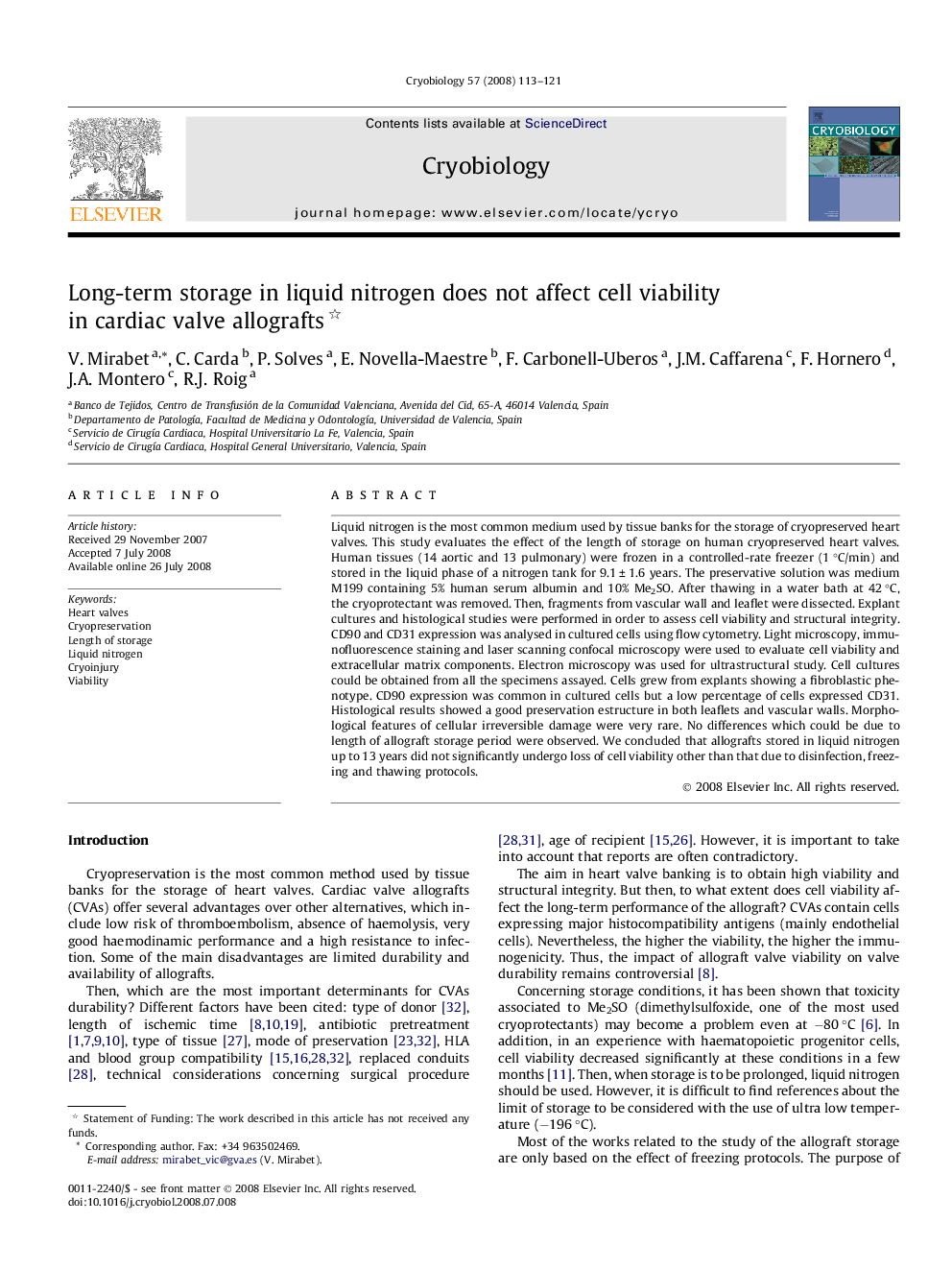| Article ID | Journal | Published Year | Pages | File Type |
|---|---|---|---|---|
| 2169255 | Cryobiology | 2008 | 9 Pages |
Liquid nitrogen is the most common medium used by tissue banks for the storage of cryopreserved heart valves. This study evaluates the effect of the length of storage on human cryopreserved heart valves. Human tissues (14 aortic and 13 pulmonary) were frozen in a controlled-rate freezer (1 °C/min) and stored in the liquid phase of a nitrogen tank for 9.1 ± 1.6 years. The preservative solution was medium M199 containing 5% human serum albumin and 10% Me2SO. After thawing in a water bath at 42 °C, the cryoprotectant was removed. Then, fragments from vascular wall and leaflet were dissected. Explant cultures and histological studies were performed in order to assess cell viability and structural integrity. CD90 and CD31 expression was analysed in cultured cells using flow cytometry. Light microscopy, immunofluorescence staining and laser scanning confocal microscopy were used to evaluate cell viability and extracellular matrix components. Electron microscopy was used for ultrastructural study. Cell cultures could be obtained from all the specimens assayed. Cells grew from explants showing a fibroblastic phenotype. CD90 expression was common in cultured cells but a low percentage of cells expressed CD31. Histological results showed a good preservation estructure in both leaflets and vascular walls. Morphological features of cellular irreversible damage were very rare. No differences which could be due to length of allograft storage period were observed. We concluded that allografts stored in liquid nitrogen up to 13 years did not significantly undergo loss of cell viability other than that due to disinfection, freezing and thawing protocols.
